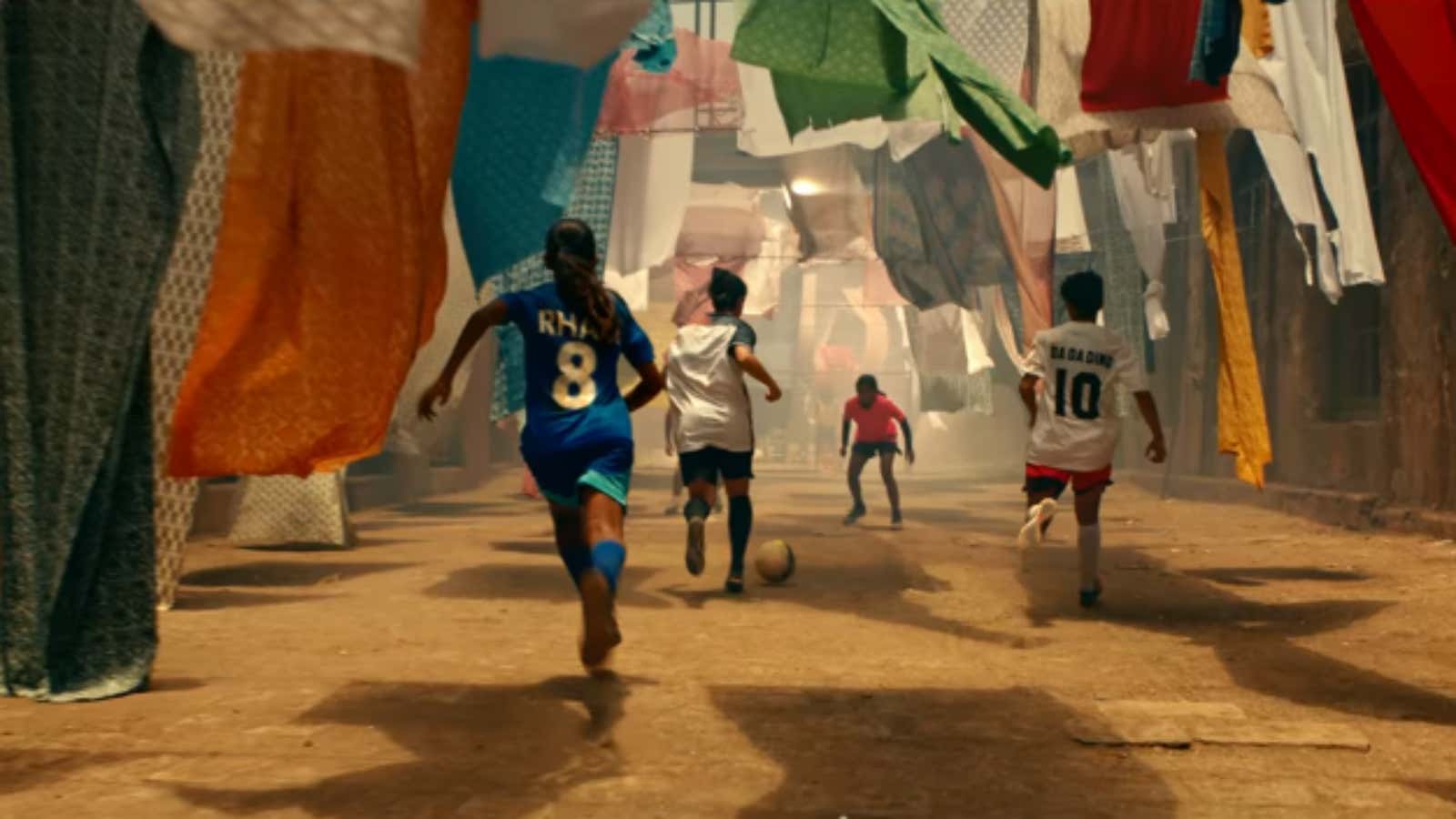Indian sportswomen had a watershed moment in the advertising world this month.
In a new campaign, Nike has featured eight of India’s lesser-known sportswomen along with one of Bollywood’s biggest stars, Deepika Padukone. Some of the athletes shown in the ad are hockey player Rani Rampal, footballers Jyoti Ann Burrett and Tanvie Hans, surfer Ishita Malaviya, athlete Shweta Hakke, and cricketers Harmanpreet Kaur, Smriti Mandana, and Shubhlakshmi Sharma. Besides, Padukone herself is a former national-level badminton player.
“Da Da Ding”, the two-minute, 52-second video, focusses on women’s fitness products and shows the athletes in all their sweaty, rugged glory.
Not surprisingly, viewers endorsed the campaign which, a week into its launch, generated 2.8 million views on YouTube. Designed by advertising agency Wieden+Kennedy, its diversity was acknowledged globally.
On July 15, Facebook chief operating officer Sheryl Sandberg termed it “amazing” and said it was “celebrating the strength and power of India’s women athletes.”
With “Da da ding”, Nike has also become one of the first companies to focus on the unprecedented wave of women athletes emerging from both urban and rural India.
These women, unlike the previous generations, are not just taking up popular sports such as cricket and running, but are getting trained even in surfing and boxing—till recently perceived as men’s bastions.
“What is happening now is (that) because of these top women athletes such as (boxer) Mary Kom and (tennis star) Sania Mirza fronting for a lot of others, we are seeing the rise of the Indian sportswomen, like never before,” said Sharda Ugra, a senior editor with ESPNcricinfo in India.
Woman on top
Globally, Nike is turning to women with a vengeance. It expects its global women’s wear business to grow—from the current $5.7 billion to $11 billion by 2020—at a much faster rate than its men’s wear business.
And Nike isn’t alone. Puma, Adidas, and Reebok, too, have noted that Indian women shoppers are spending more, thanks to the higher disposable incomes than a decade ago and more choices.
“I am extremely pleased to see the growth in women’s activewear categories in our stores in B and C cities in the last two to three years. It gives us the insight that fitness orientation is spreading beyond the larger cities,” said Abhishek Ganguly, managing director, Puma India.
The Indian sportswear market, in turn, is expected to double between 2013 to 2016 to touch Rs36,520 crore ($5.4 billion), according to research agency Euromonitor.
“Women across the world are embracing sports and an active lifestyle like never before,” Keerthana Ramakrishnan, Nike India communications head, told Quartz. Nike did not disclose data on the share of women’s activewear in the company’s India figures.
However, the US-based brand’s new focus reflects the ground reality: the number of Indian sportswomen has swollen in the last decade.
The picture is particularly bright in small-town and rural India: Women’s participation in village, district, state, and national-level sports has grown 328% over the past four years—albeit on a smaller base—according to data compiled in March 2015 by Indiaspend, a data journalism website. Rural female participation increased from 249,190 in 2008-09 to 1.07 million in 2013-14.
Meanwhile, more schools are including sports in their curriculum, giving opportunities to girls, Indiaspend reported.
At the national level, too, things have begun to look up.
For instance, last year, women cricketers in the country got their first residential academy, welcoming more active participation. Earlier this year, India hosted the International Cricket Council Women’s World T20 tournament.
In 2014, more Indian women clinched medals (nearly 47% of all medals) at the Asian Games held in South Korea, than ever before. India will also take a strong women’s contingent to the 2016 Rio Olympics, where the women’s hockey team will represent the country for the first time in 36 years.
Corporate reluctance
But brands have been slow to acknowledge this growing tide of Indian sportswomen.
For instance, Star Sports slowed down its marketing plans for the women’s cricket world cup held in India in March after it failed to attract big-ticket advertisers.
In any case, most women’s activewear brands typically feature Bollywood celebrities or the country’s top three female athletes—Sania Mirza, Mary Kom, and badminton player Saina Nehwal.
For instance, Mirza has been a global brand ambassador for Adidas since 2007. Reebok—part of the Adidas Group—roped in Bollywood actress Kangana Ranaut earlier this year for a campaign titled “Be more human.”
Puma, too, is working with movie stars such as Jacqueline Fernandez and Lisa Haydon. The brand is also associated with Bengaluru-based golfer Sharmila Nicollet.
Nike, however, may be the first to acknowledge India’s lesser-known sportswomen through a full-blown media campaign.
Also, more TV networks and companies are beginning to put money into other sports, in a cricket-crazy India. In a first, India hosted a Pro Kabaddi League for women in the month of July backed by Star India, Amateur Kabaddi Federation of India and sports management company Mashal Sports.
Referring to campaigns such as Nike’s latest one as belated but good news, ESPN’s Ugra said, “It’s literally like they are standing up and telling the men you cannot ignore us anymore.” Even half-a-decade ago, she said, sportswomen never got so much screen space.




